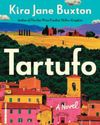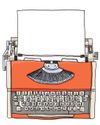
The characters who filled my short stories would be appalled: Annie, who blew kisses to her little brother during his difficult first day of school; Curley, a mail-carrying hedgehog whose uniform mishap helped him learn the freedom of flexibility; Freddy, who discovered his superpower of helping others. These gentle souls would look askance at my young adult protagonist, a teenage boy trained to burn those claimed by Lucifer, and wonder how I had strayed so far from my usual path. After all, my characters were meant to be kind and sweet, not lurking in the shadows with matches in their hands.
Let me rephrase: These were the types of characters I believed I was supposed to write.
The walls around my storytelling began quite innocently. As the second child of four, I was not the oldest, not the youngest, not the only boy. I became the quiet one who kept the peace, bringing home straight A's and perfect attendance records. I graduated at the top of my high school class and behaved in my Stanford dorm, eschewing parties for midnight conversations and homework sessions. When I decided to pursue a career in education, it seemed the perfect fit. I would work with children, sharing the joy of learning and helping them grow into their best selves.
This perspective spilled into my stories, and I wanted my characters to be their best selves, too. Writing is such a personal experience they felt like reflections of pieces of me, and I made their mistakes small, the consequences reversible, their lives only gently ruffled. They always tried their best, and when they fell short, they learned their lessons, righted their wrongs, and moved on unscathed.
この記事は Writer’s Digest の March - April 2024 版に掲載されています。
7 日間の Magzter GOLD 無料トライアルを開始して、何千もの厳選されたプレミアム ストーリー、9,000 以上の雑誌や新聞にアクセスしてください。
すでに購読者です ? サインイン
この記事は Writer’s Digest の March - April 2024 版に掲載されています。
7 日間の Magzter GOLD 無料トライアルを開始して、何千もの厳選されたプレミアム ストーリー、9,000 以上の雑誌や新聞にアクセスしてください。
すでに購読者です? サインイン

What Is Your Story Question?
Revision and editing advice to take your first draft to the next level.

Writing for the People We Hope to Become
Elisa Stone Leahy's new middle-grade novel, Mallory in Full Color, tackles the in-between moments of adolescence, when who we are and who we want to become collide.

Creating Community
Whether hot off the presses or on the shelves for years, a good book is worth talking about.

Pat Barker
The Booker Prize-winning author of Regeneration shares the role characters play in developing novel ideas and explains what appeals to her about reimagining mythology.

How to Write in Different Genres
Emiko Jean and Yulin Kuang share tips and strategies for how they successfully write in different genres and mediums.

The Shortest Distance Between Two Points
Ten tips for writing a novel with 100-word stories.

Mayfly Marketing
How to sell your novel in a short-attention-span world.

"You'll be a great essay".
How to write six types of personal essays by finding the funny in your life.

The Idea Factory
Tired of staring at an empty screen? Unlock your inner fiction generator with these surprising inspiration techniques.

Seinfeld Was Right: That's a Story
Use mundane moments from everyday life to create stories that pack a punch.